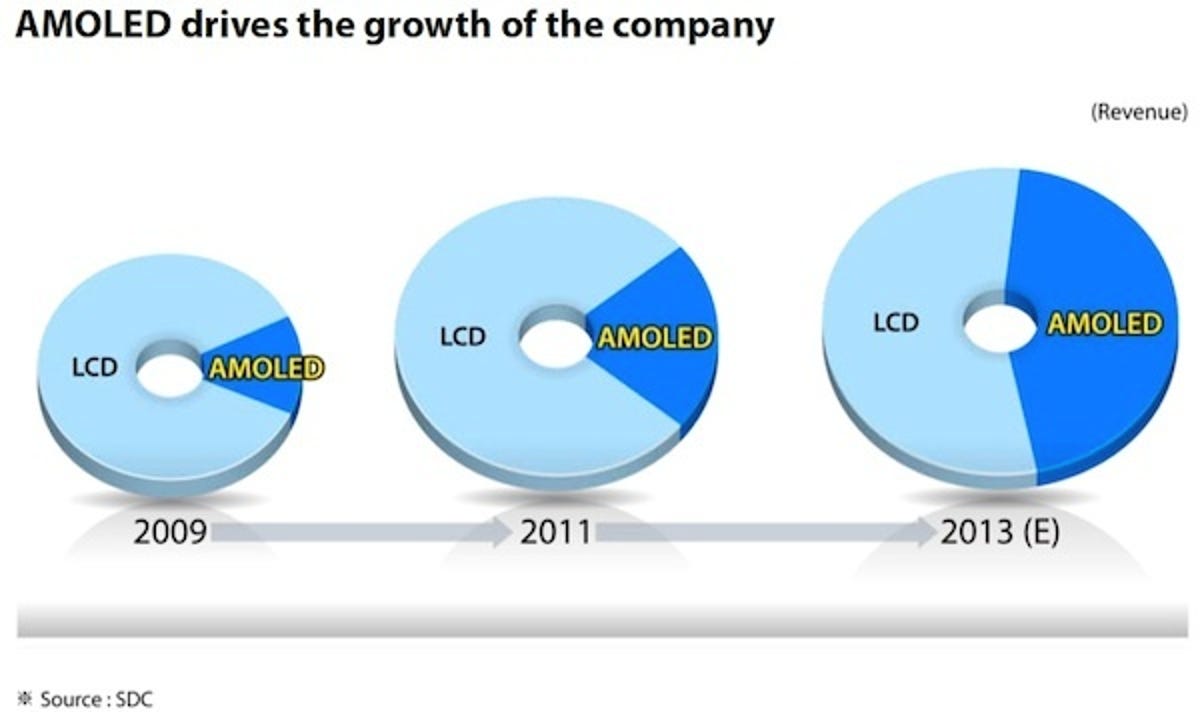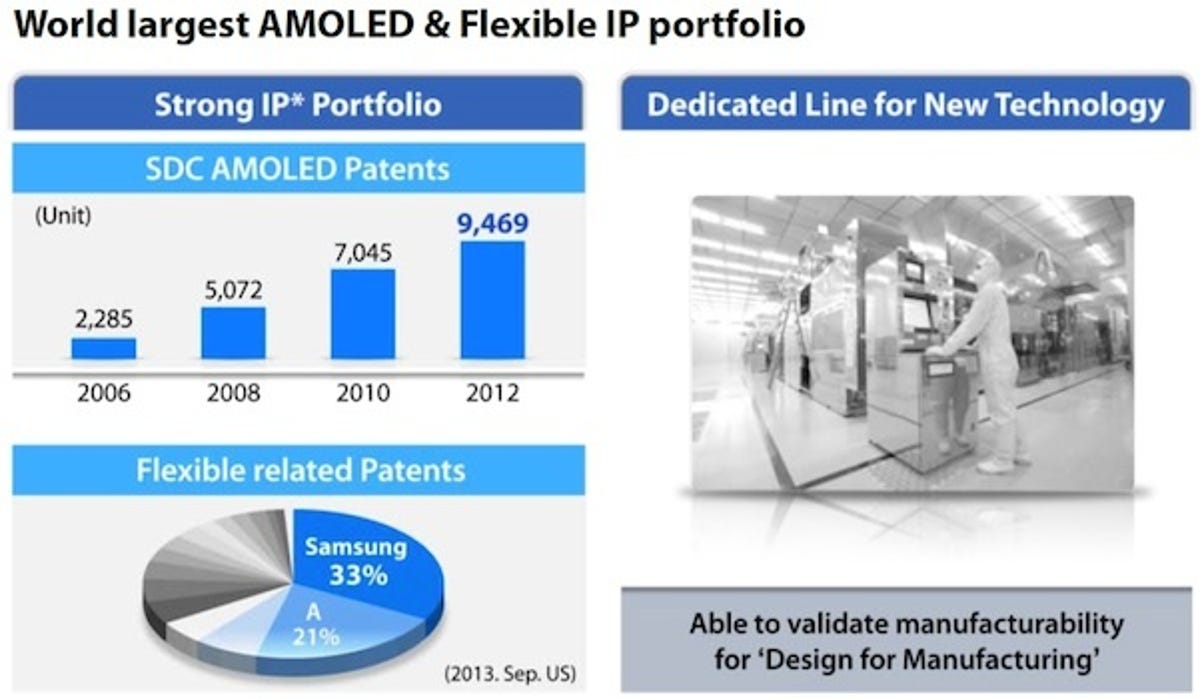Samsung is throwing its formidable weight behind AMOLED display tech — which could be seen as a challenge to Apple.
The South Korean electronics giant, maker of the Galaxy line of smartphones, made it clear Wednesday that active-matrix organic LED (AMOLED) displays are its future.
“We were the first to commercialize AMOLED back in 2007. This year we successfully produced 440 ppi [pixels per inch] high-resolution AMOLED….we also launched the first curved AMOLED displays,” said Kinam Kim, CEO of Samsung Display, during a presentation at the company’s analyst day in Seoul, South Korea.
That presentation had no shortage of slides showing upcoming devices using curved and/or flexible displays, which are based on OLED tech.


Samsung
And that could be a problem for Apple, if the consumer market turns increasingly to AMOLED tech.
Apple CEO Tim Cook said earlier this year at a Goldman Sachs conference that OLED displays are “awful” and had other choice words about the tech.
Whether Apple is sincerely against the technology or just posturing isn’t clear.
What is clear, however, is that OLED screens are here to stay and that Samsung dominates the category.
“In a span of just a few years OLED display technology is now challenging and even exceeding the performance of the best LCDs across the board in brightness, contrast, color accuracy, color management, picture quality, screen uniformity, and viewing angles,” said Raymond Soneira, president of DisplayMate Technologies, in response to an e-mail query.
And overall, Samsung Display has become the world’s largest display producer — a fact that Apple can’t ignore.
For example, Apple has reportedly asked Samsung to supply Retina displays for the iPad Mini Retina because LG Display and Sharp have not been able to supply enough for Apple’s needs.
“Samsung Display…has been able to command to major markets. During the first half of this year, Samsung Display was the No.1 supplier for four major applications: smartphones, tablets, large-sized TVs, and public information displays,” said Kim, citing figures from DisplaySearch.


Samsung



